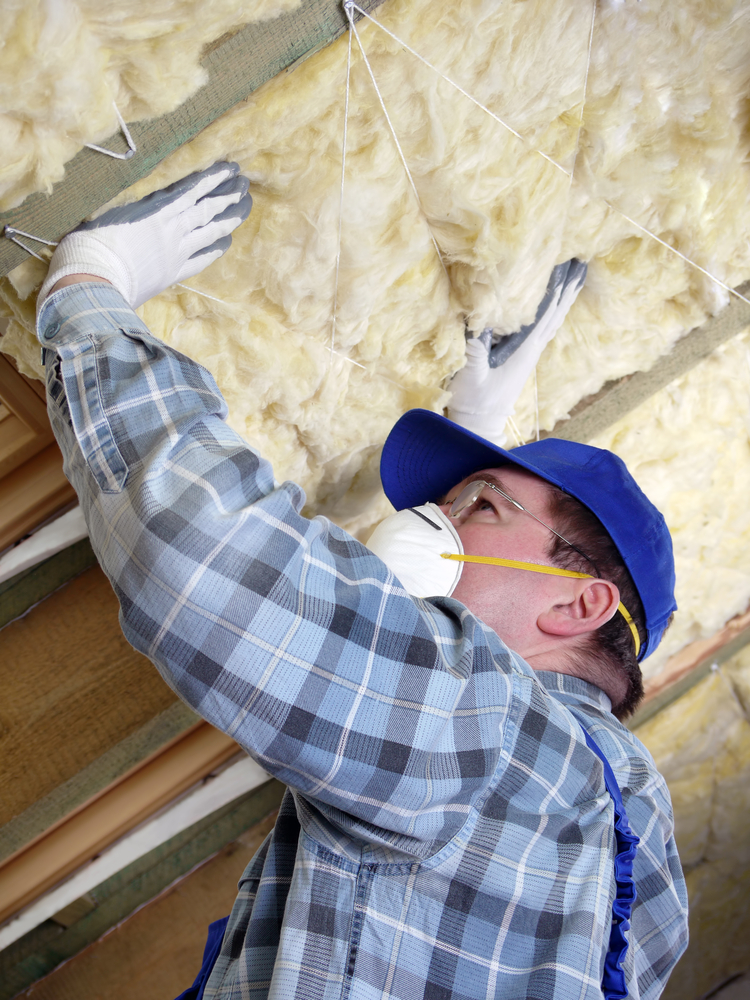Insulation For Energy Efficient New Construction

Insulation plays a crucial role in creating energy efficient new construction. It helps regulate temperature, reduces heat transfer, and minimizes air leakage through building materials. In other words, insulation helps keep the indoor environment comfortable while reducing energy consumption and costs.
But not all insulation is created equal. The type of insulation used and its installation process can greatly impact a building's overall energy efficiency. In this guide, we will explore the different types of insulation commonly used in new construction and how they contribute to creating an energy efficient building. We will also discuss important factors to consider when choosing insulation for a new construction project.
Types of Insulation
There are several types of insulation that can be used in new construction, each with its own unique properties and benefits. The most common types of insulation include fiberglass, cellulose, foam board, and spray foam.
Fiberglass insulation is made from fine glass fibers and is one of the most widely used types of insulation. It is affordable, easy to install, and has good thermal resistance. However, it can be irritating to the skin and respiratory system if not handled properly.
Cellulose insulation is made from recycled paper products and is an eco-friendly option for insulation. It has good thermal resistance and can easily fill gaps and cavities in walls, floors, and ceilings. However, it can settle over time and may require additional installation.
Foam board insulation is made from polystyrene or polyurethane and is a popular choice for new construction. It has high thermal resistance and can be easily cut to fit in tight spaces. However, it can be more expensive than other types of insulation.
Spray foam insulation is applied as a liquid and expands into a solid foam, filling all gaps and crevices. It has the highest thermal resistance and can also act as an air barrier. However, it requires professional installation and can be more costly.
Factors to Consider When Choosing Insulation
When selecting insulation for a new construction project, there are several important factors to consider. These include:
R-value
The R-value of insulation refers to its thermal resistance, or how well it can resist heat transfer. The higher the R-value, the more effective the insulation is at preventing heat loss and gain. Building codes often require a minimum R-value for new construction based on location and climate.
Plus, choosing insulation with a higher R-value can lead to energy cost savings in the long run. However, it's important to consider the other factors mentioned below as well when selecting insulation for a new construction project.
Material and Environmental Impact
The type of material used for insulation can also impact its overall effectiveness and environmental impact. As mentioned earlier, cellulose insulation is made from recycled paper products and is considered an eco-friendlier option. Additionally, some types of insulation may contain harmful chemicals or emit volatile organic compounds (VOCs) during installation.
It's important to research the materials used in insulation and choose ones that are safe for both the environment and human health. This can also contribute to earning green building certifications and meeting sustainability goals for the new construction project.
Installation Process
The installation process of insulation can greatly impact its effectiveness. Improper installation can lead to gaps and inadequate coverage, reducing the overall energy efficiency of a building. This is why it's important to hire experienced professionals or follow proper installation guidelines when installing insulation.
Additionally, some types of insulation may require special equipment or tools for installation, adding to the overall cost. It's important to consider these factors when choosing insulation for a new construction project.
Moisture Control
Proper moisture control is essential for maintaining a healthy and energy efficient building. Certain types of insulation, such as spray foam, can act as a barrier against moisture, preventing mold and mildew growth. It's important to choose insulation that can effectively control moisture and prevent any potential damage.
Cost and Budget
Of course, cost is a major consideration when choosing insulation for a new construction project. The initial cost of the insulation itself, as well as any additional installation costs, should be factored into the overall budget. It's important to balance the upfront cost with long-term energy savings and choose an insulation that fits within the project's budget.
Additionally, some types of insulation may qualify for tax credits or rebates, providing additional cost savings. It's important to research and compare the costs of different types of insulation before making a final decision.
Why Choose Energy Efficient Insulation
In addition to the factors mentioned above, there are several other reasons why choosing energy efficient insulation is important for new construction projects. These include reducing energy consumption and costs, improving indoor air quality, and contributing to a more sustainable environment.
Energy efficient insulation can greatly reduce heat loss and gain in a building, leading to lower energy consumption and cost savings. This can also help to create a more comfortable and consistent indoor temperature.
Moreover, proper insulation can act as an air barrier, preventing the infiltration of outside pollutants and allergens into the building. This helps to improve indoor air quality, creating a healthier environment for occupants.
Lastly, choosing energy efficient insulation can contribute to reducing carbon emissions and promoting sustainability. By reducing energy consumption, buildings can help to combat climate change and create a more sustainable future.
Does Insulation Really Make a Difference
In short, yes, insulation does make a significant difference in the overall energy efficiency and comfort of a building. Properly installed insulation can greatly reduce heat loss and gain, leading to lower energy consumption and cost savings.
According to the U.S. Department of Energy, adding insulation can save homeowners an average of 15% on heating and cooling costs. This not only benefits the environment but also helps to lower utility bills for occupants.
Moreover, insulation can greatly improve indoor air quality by acting as an air barrier and preventing outside pollutants from entering the building. It can also contribute to creating a more comfortable and consistent indoor temperature.
And energy efficient insulation can also have a positive impact on the resale value of a home. Buyers are often looking for energy-saving features, making homes with proper insulation more attractive and valuable.
How to Choose the Right Insulation
When choosing insulation for a new construction project, it's important to consider all the factors mentioned above, including R-value, material and environmental impact, installation process, moisture control, and cost. It's also helpful to consult with professionals and research the different types of insulation available.
Consider factors such as location, climate, and building design when selecting the appropriate R-value for insulation. Research the materials used in different types of insulation and choose ones that are safe for both the environment and human health.
Also, be aware of the installation process and any additional equipment or tools that may be required. Choose insulation that can effectively control moisture to prevent damage to the building. And finally, balance upfront costs with long-term energy savings and potential tax credits or rebates.
By carefully considering all these factors, you can choose the right insulation for your new construction project.
Mistakes to Avoid
When it comes to insulation, there are a few common mistakes that should be avoided. These include:
- Not properly sealing air leaks before installing insulation. This can greatly reduce its effectiveness and lead to higher energy costs.
- Installing the wrong type of insulation for the climate or building design. For example, using fiberglass insulation in a hot and humid climate may not be as effective as spray foam.
- Choosing the lowest R-value without considering other factors. It's important to find a balance between cost and energy efficiency.
- Not hiring experienced professionals or following proper installation guidelines. Improperly installed insulation can lead to moisture issues, mold growth, and even fire hazards.
- Neglecting to maintain and replace insulation when necessary. Over time, insulation can lose its effectiveness and may need to be replaced.
By avoiding these common mistakes, you can ensure that your new construction project has the best possible insulation for long-term energy efficiency and comfort.
Contact Koala Insulation for Your New Construction Project
At Koala Insulation, we understand the importance of choosing the right insulation for your new construction project. Our team of experienced professionals is knowledgeable and experienced in all types of insulation, and we can help you make the best decision for your project.
By working with us, you'll be able to avoid common mistakes such as not properly sealing air leaks or choosing the wrong type of insulation for your climate. We prioritize promptness, cleanliness, and expertise in every job we do. And with over 15 years of experience in construction and home services, you can trust that we will provide the best quality service for your project.
Our range of services includes blown-in attic insulation, spray foam insulation, solar attic fans, air sealing, insulation removal, and batt insulation installation. We also work on residential, commercial, and industrial projects.
With Koala Insulation of SW Chicago, you can experience increased home comfort, lower energy bills, reduced noise levels, and eco-friendliness.
We Provide Insulation Services to the SW Chicago area, including Cook, Will, and DuPage counties. Contact us today through our website or by phone to schedule your free insulation evaluation and see how we can improve your new construction project.
FAQs
How do insulating concrete forms (ICFs) contribute to an energy-efficient home?
Insulating concrete forms (ICFs) are a key component in constructing energy-efficient homes. By combining the strength of concrete with the insulation properties of foam, ICFs significantly reduce heat transfer through exterior walls. This minimizes the workload on your heating and cooling system, keeping your home comfortable year-round and lowering energy costs. The solid structure of ICFs also helps in reducing cold air infiltration, further enhancing the energy efficiency of the home.
What advantages do structural insulated panels (SIPs) offer over traditional insulation materials?
Structural insulated panels (SIPs) offer superior insulation value and air tightness compared to many traditional insulation materials. SIPs consist of an insulating foam core sandwiched between two structural facings, typically made of oriented strand board (OSB). This design minimizes thermal bridging and provides continuous insulation across the entirety of the panel, which can lead to more consistent indoor temperatures and a reduction in energy consumption for heating and cooling.
Can loose fill insulation be effective in preventing heat loss in new construction?
Yes, loose fill insulation can be very effective in preventing heat loss in new construction. It is particularly useful for filling irregular spaces, around obstructions, or in areas where it's difficult to install other types of insulation. Loose fill insulation can conform to any space without disturbing structures or finishes, providing a great option for adding high insulation value to attics, wall cavities, and other hard-to-reach places, thereby enhancing the overall energy efficiency of the home.
Why is rigid foam insulation recommended for insulating exterior walls in new construction?
Rigid foam insulation is recommended for insulating exterior walls in new construction due to its high insulation value per inch of thickness and its ability to reduce thermal bridging through wood studs or other structural elements. Installing rigid foam on the outside of exterior walls creates a continuous insulation layer that covers the entire wall, including studs and other thermal bridges, effectively blocking heat flow.
Conclusion
Insulation plays a crucial role in creating energy-efficient and comfortable buildings. It helps to reduce energy consumption, lower utility bills, improve indoor air quality, and promote sustainability. When choosing insulation for your new construction project, it's important to consider factors such as R-value, material and environmental impact, installation process, moisture control, and cost.
Additionally, it's essential to avoid common mistakes such as not sealing air leaks, using the wrong type of insulation, and neglecting maintenance. By working with a professional insulation company like Koala Insulation, you can ensure that your project has the best possible insulation for long-term efficiency and comfort.
So if you're in the SW Chicago area and looking for quality insulation services, contact Koala Insulation today and experience the benefits of energy-efficient insulation in your new construction project.
Find Your Location


Get a quote



